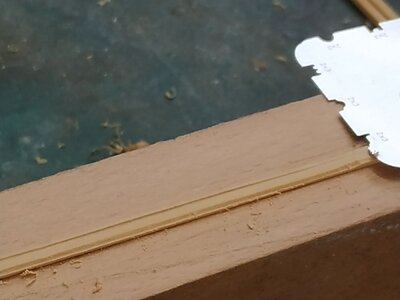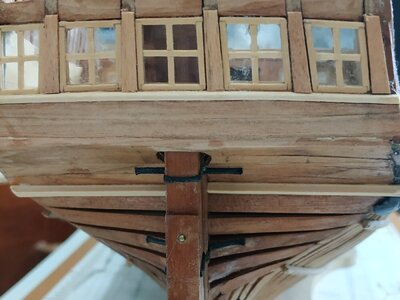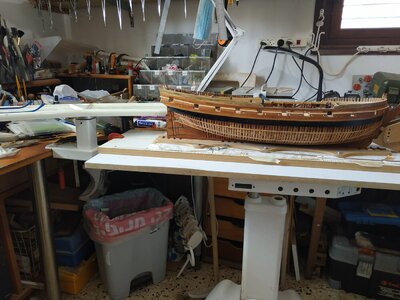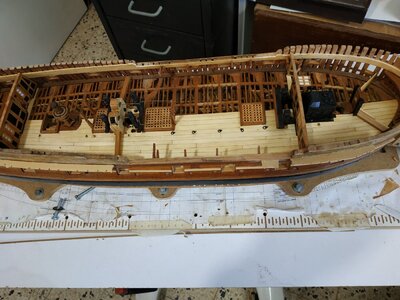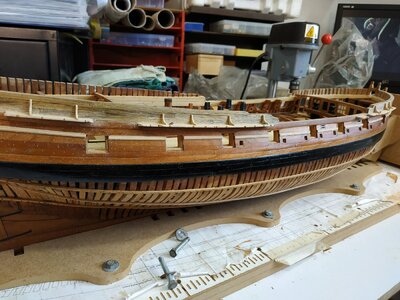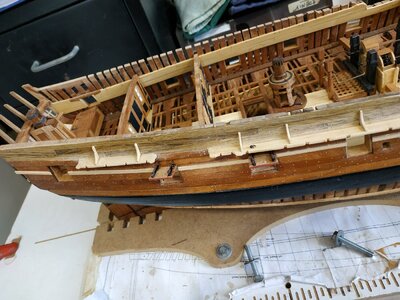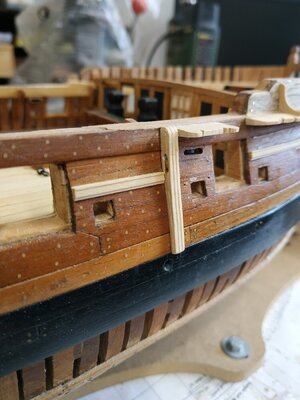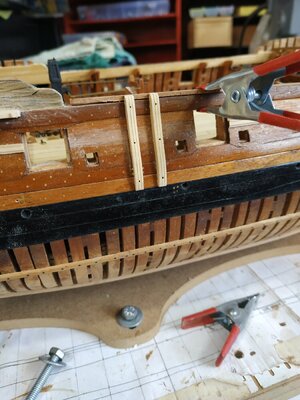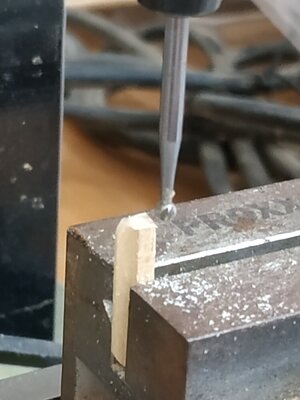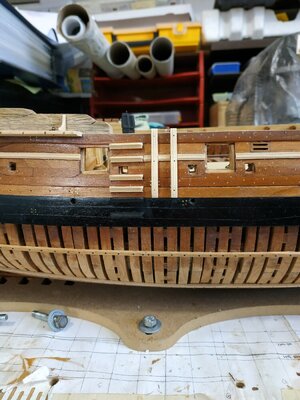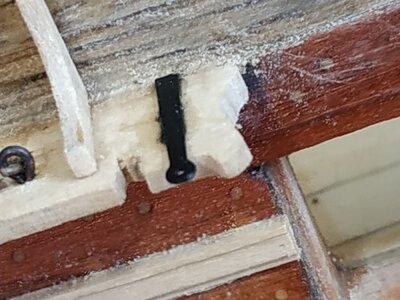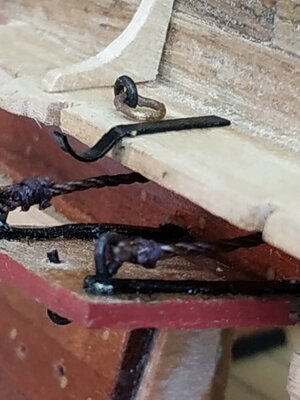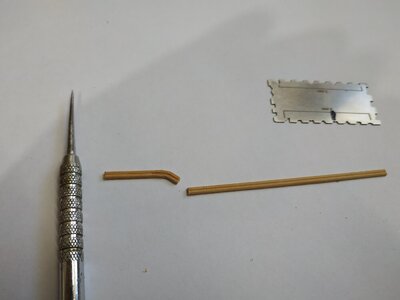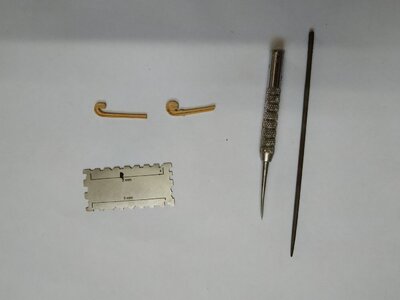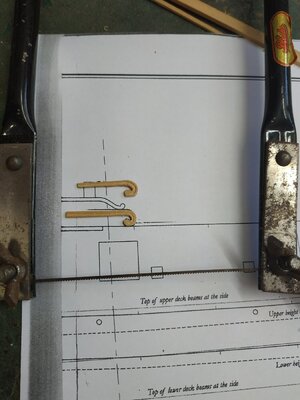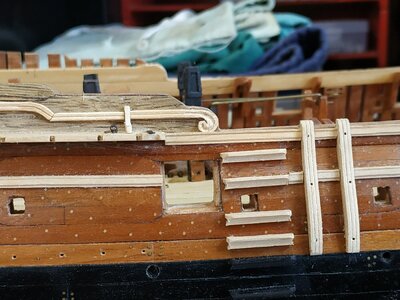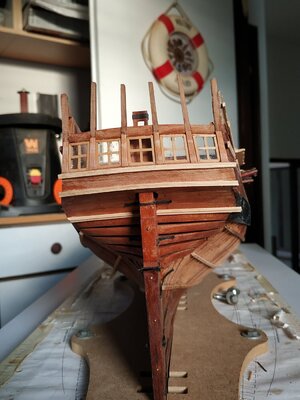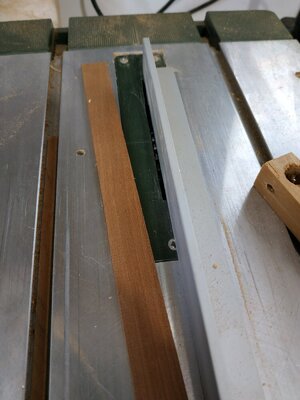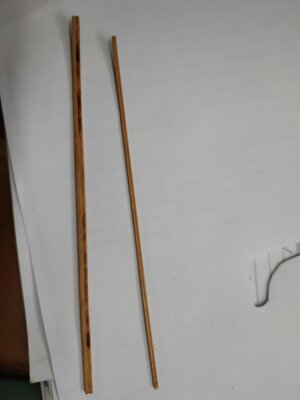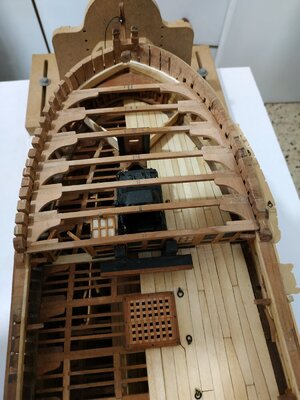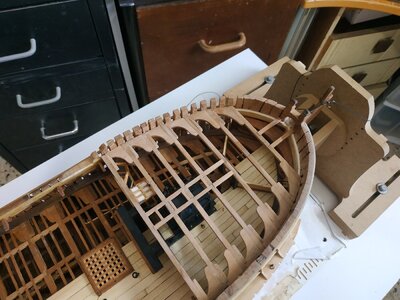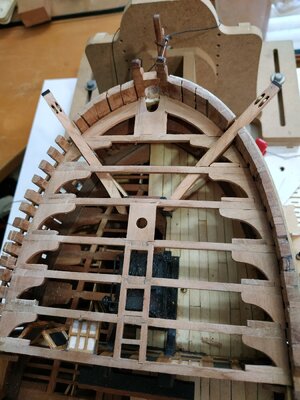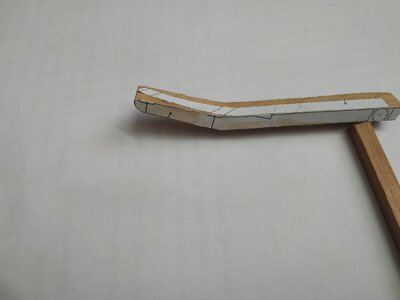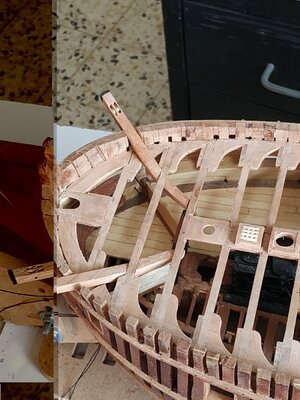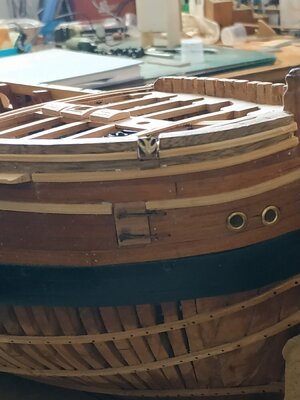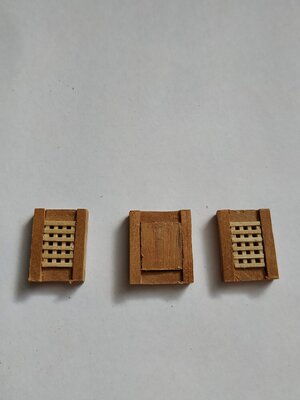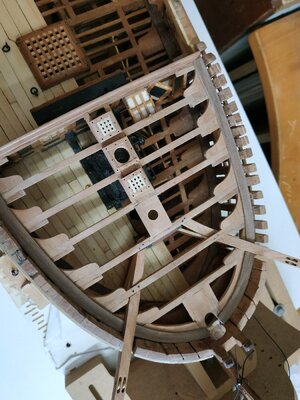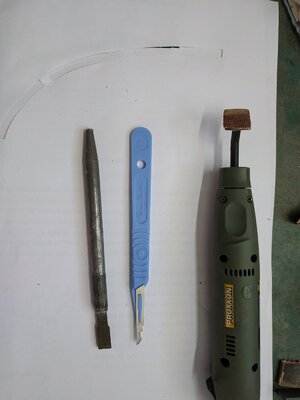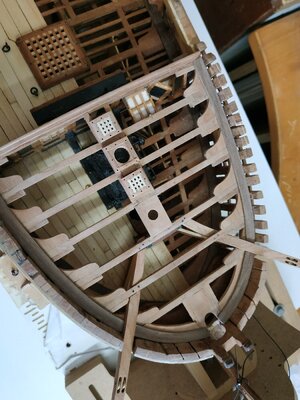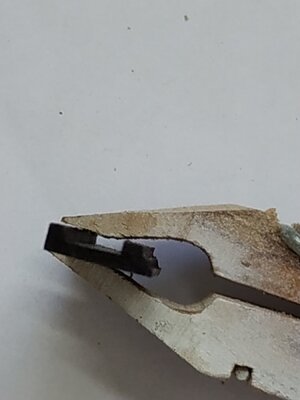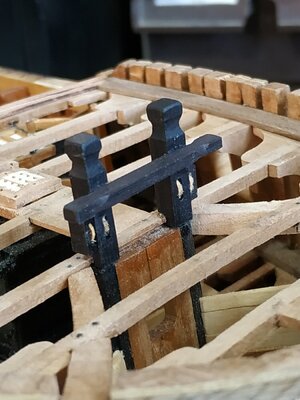Armaments- to be omitted
I think these are optional for this kind of “open” or admiralty model.
I’ve no experience in turning brass for guns, and not much interest at present in purchasing cannons.
It would probably add several months to the build and I want to press on.
Gun Port Lids
According to TFFM and models used for illustration,lids were only fitted in some of the ports- 1st,for the manger, 8th and 9th, for the captain-the naval priority is noted.
THe 1st is a narrow port so the lid is hung vertically with the hinges on the fore edge.
This and the other Lids are constructed in 2 layers - the outer with (and matching) the run of the hull planks. The inner at right angles.
The total thickness of the lid is the same as the outer hull planking so that, when closed, it is flush with the hull, including any curve.
Our model therefore requires plank 0.53 thick,the width to match the hull planking at each port hole.
Added a bevel on the lower edge to enable closing.
The Inner surface is traditionally painted red.
I thought to delay fitting until after other hull structures so as to avoid damaging them. Thats why the pictures are out of sequence. MISTAKE.
Access is restricted.
Anyway, the hinges came with the other etchings.
A pair of holes above the port hole for hinge insertion, and another pair for the lanyards.
The lanyards are missing from the 1st port Lid (3D rendering) and are ?hidden by the bow structures in the illustration model. I’ve omitted them.
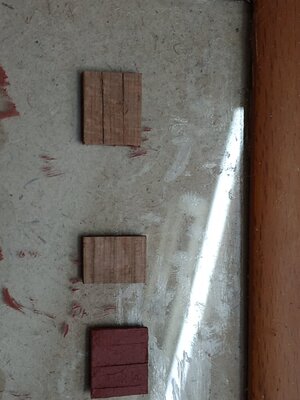
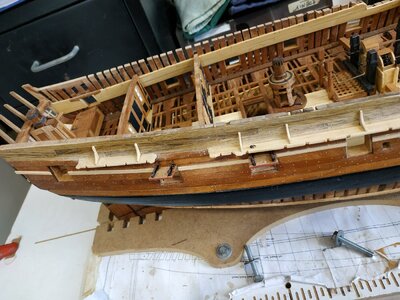
I think these are optional for this kind of “open” or admiralty model.
I’ve no experience in turning brass for guns, and not much interest at present in purchasing cannons.
It would probably add several months to the build and I want to press on.
Gun Port Lids
According to TFFM and models used for illustration,lids were only fitted in some of the ports- 1st,for the manger, 8th and 9th, for the captain-the naval priority is noted.
THe 1st is a narrow port so the lid is hung vertically with the hinges on the fore edge.
This and the other Lids are constructed in 2 layers - the outer with (and matching) the run of the hull planks. The inner at right angles.
The total thickness of the lid is the same as the outer hull planking so that, when closed, it is flush with the hull, including any curve.
Our model therefore requires plank 0.53 thick,the width to match the hull planking at each port hole.
Added a bevel on the lower edge to enable closing.
The Inner surface is traditionally painted red.
I thought to delay fitting until after other hull structures so as to avoid damaging them. Thats why the pictures are out of sequence. MISTAKE.
Access is restricted.
Anyway, the hinges came with the other etchings.
A pair of holes above the port hole for hinge insertion, and another pair for the lanyards.
The lanyards are missing from the 1st port Lid (3D rendering) and are ?hidden by the bow structures in the illustration model. I’ve omitted them.




